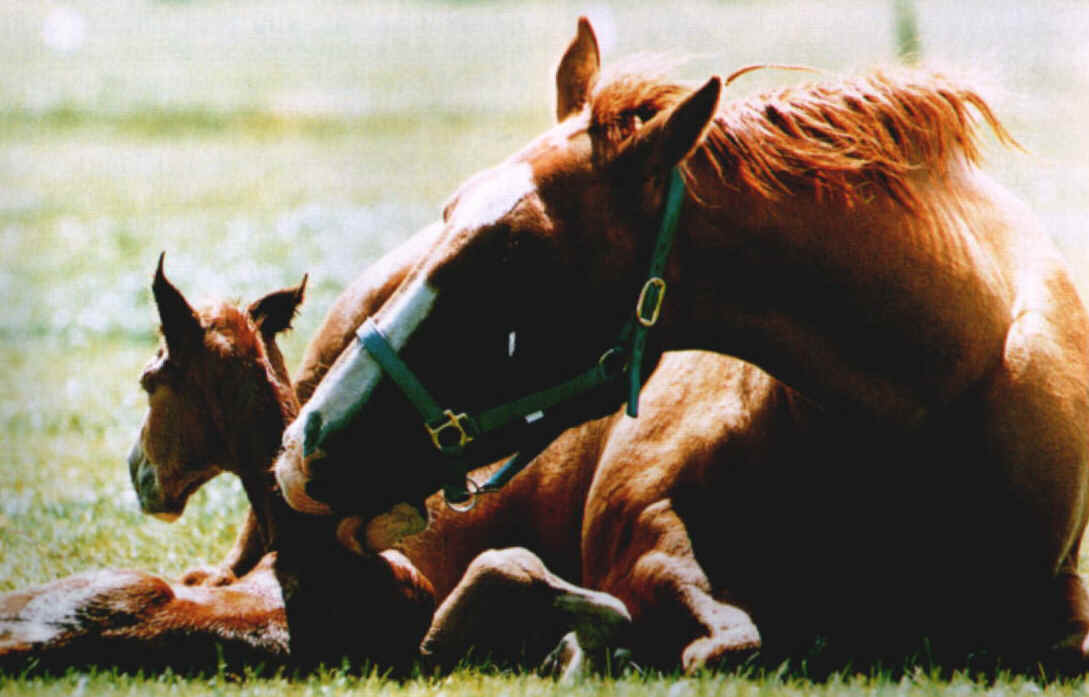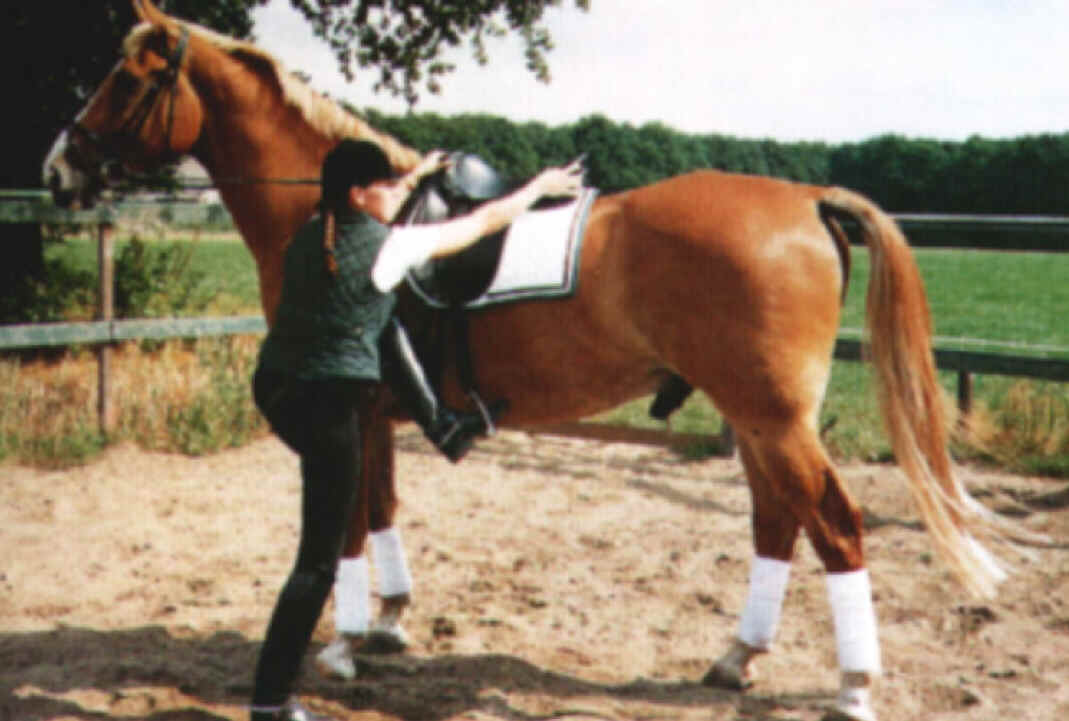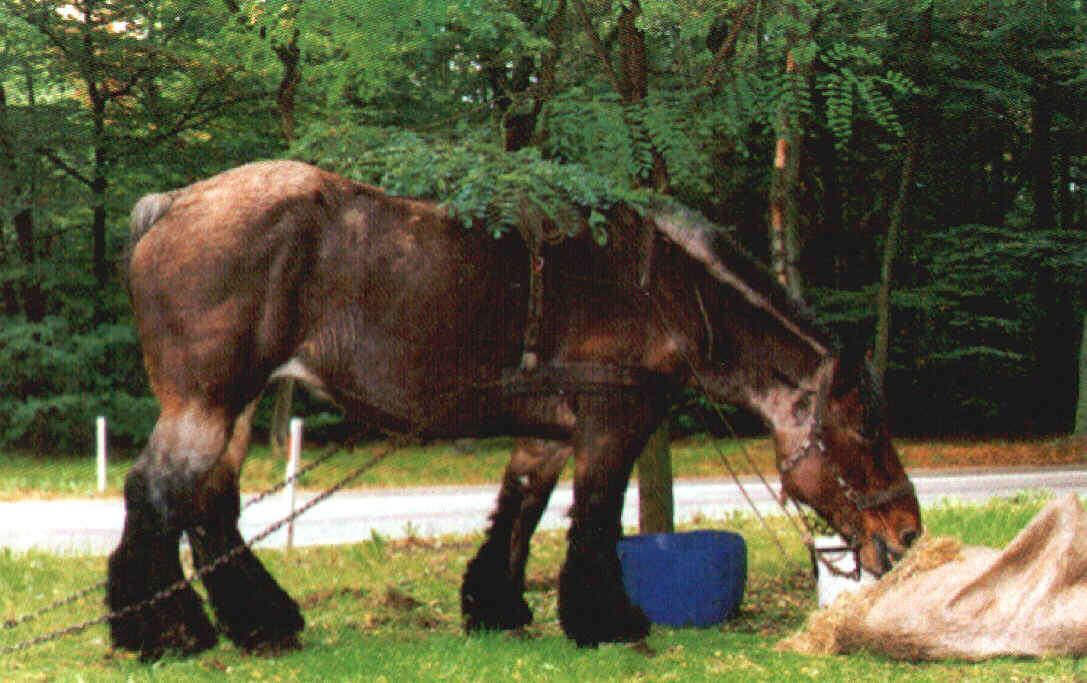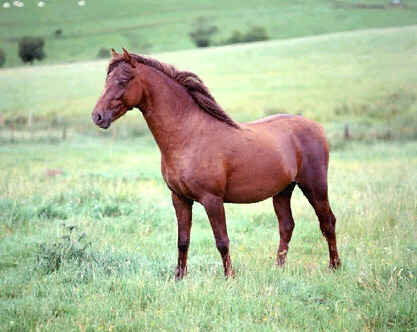



HACKNEY PONY
 common
name for a horse and pony, both recognized for their spectacular,
high-stepping gait. Both the Hackney horse and Hackney pony share
a common ancestor but have developed along different lines. The
Hackney horse was developed in the mid-18th century from Norfolk
and Yorkshire trotters. The Hackney pony was developed in the
1880s by crossing trotters with fell and Welsh ponies. Compared
to most horse breeds, the Hackney horse is small. It stands about
142 to 158 cm (about 56 to 62 in, or 14 to 15.5 hands) high at
the withers. (The highest part of the back, located between the
shoulder blades). The body is compact with a short, straight back
and a deep chest. Its strong, muscular legs are short. The arched
neck supports a small head with a small muzzle, large eyes, and
small ears.} The Hackney pony stands about 122 to 142 cm (about
48 to 56 in, or 12 to 14 hands) high at the withers. The Hackney
pony is similar in body shape and traits to the Hackney horse,
but retains the unique characteristics of a pony it has greater
body depth in relation to its height, and is more sure-footed
than a horse. Both the Hackney horse and Hackney pony are popular
for their fancy, high-stepping performance in shows and dressage
(guiding a horse through a series of complex maneuvers with
slight movements of the hands, legs, and weight of the rider).
Both are fast, and the Hackney horse especially has good
endurance. The Hackney pony works well as a light draft animal
pulling carts and wagons.
common
name for a horse and pony, both recognized for their spectacular,
high-stepping gait. Both the Hackney horse and Hackney pony share
a common ancestor but have developed along different lines. The
Hackney horse was developed in the mid-18th century from Norfolk
and Yorkshire trotters. The Hackney pony was developed in the
1880s by crossing trotters with fell and Welsh ponies. Compared
to most horse breeds, the Hackney horse is small. It stands about
142 to 158 cm (about 56 to 62 in, or 14 to 15.5 hands) high at
the withers. (The highest part of the back, located between the
shoulder blades). The body is compact with a short, straight back
and a deep chest. Its strong, muscular legs are short. The arched
neck supports a small head with a small muzzle, large eyes, and
small ears.} The Hackney pony stands about 122 to 142 cm (about
48 to 56 in, or 12 to 14 hands) high at the withers. The Hackney
pony is similar in body shape and traits to the Hackney horse,
but retains the unique characteristics of a pony it has greater
body depth in relation to its height, and is more sure-footed
than a horse. Both the Hackney horse and Hackney pony are popular
for their fancy, high-stepping performance in shows and dressage
(guiding a horse through a series of complex maneuvers with
slight movements of the hands, legs, and weight of the rider).
Both are fast, and the Hackney horse especially has good
endurance. The Hackney pony works well as a light draft animal
pulling carts and wagons.
Darmoore Pony - Exmoor Pony - Fjord -Hackney - Highland Pony - Icelandic Pony
Barb (HORSE) - Bashkir Welsh Mountain Pony